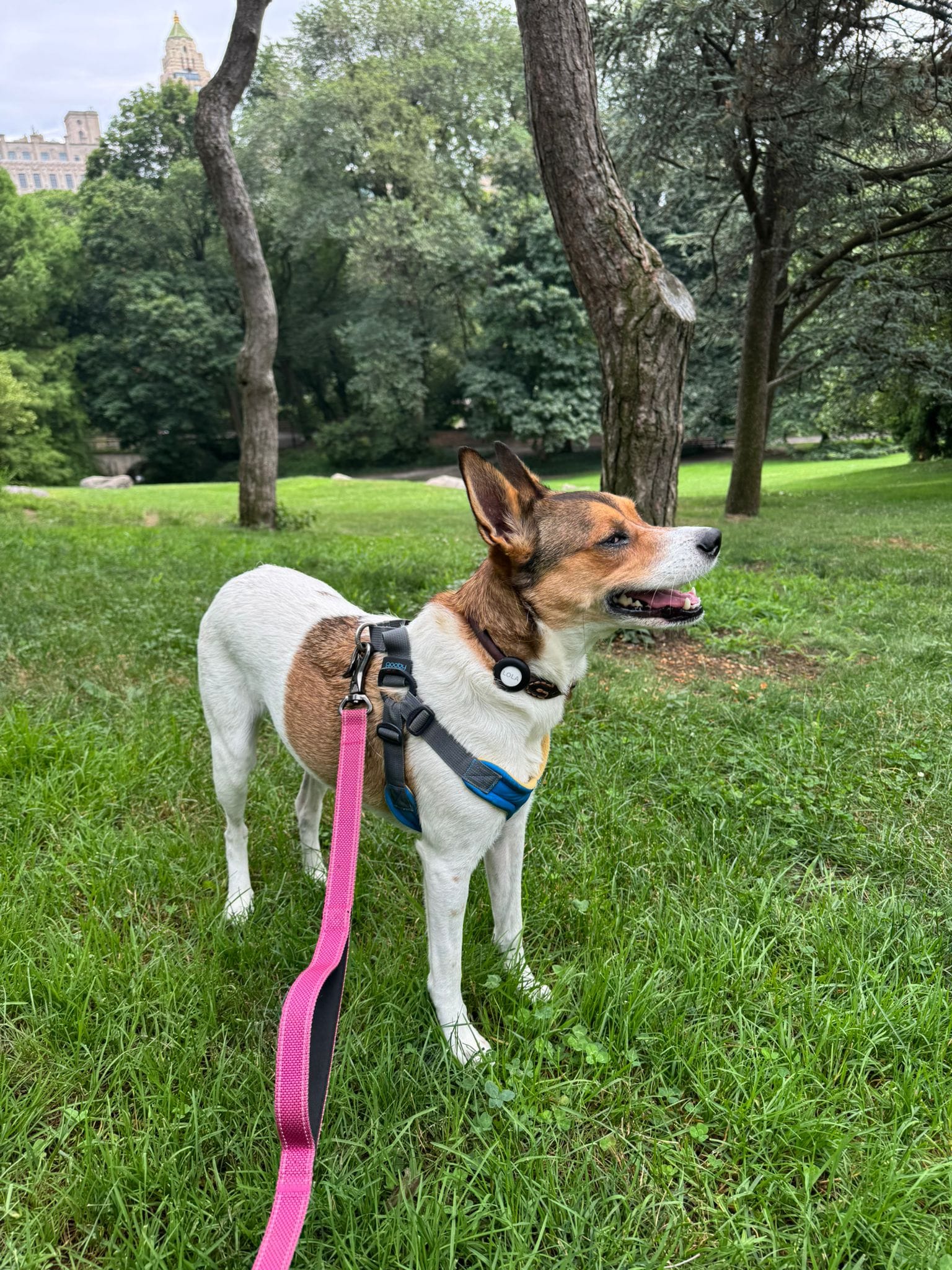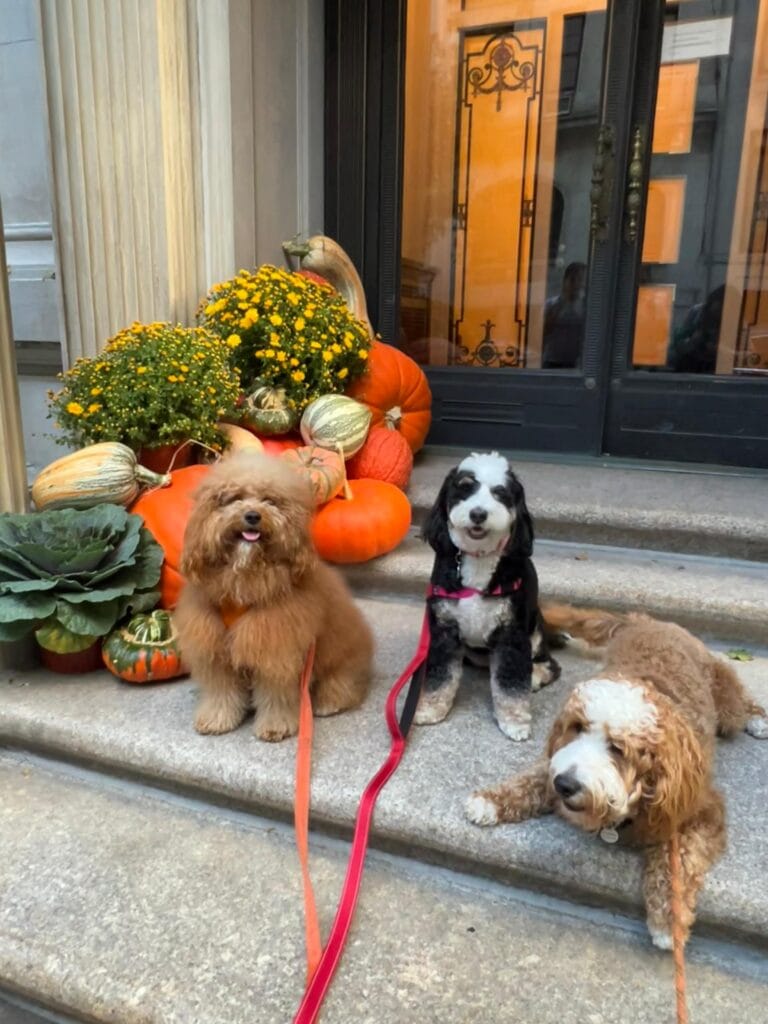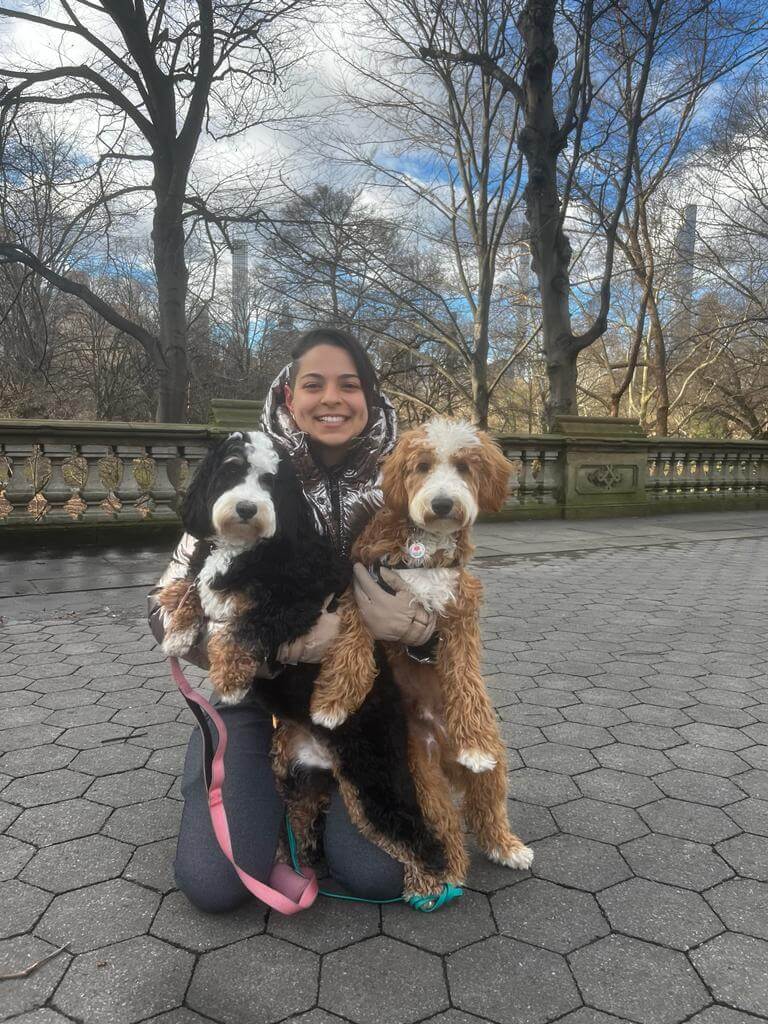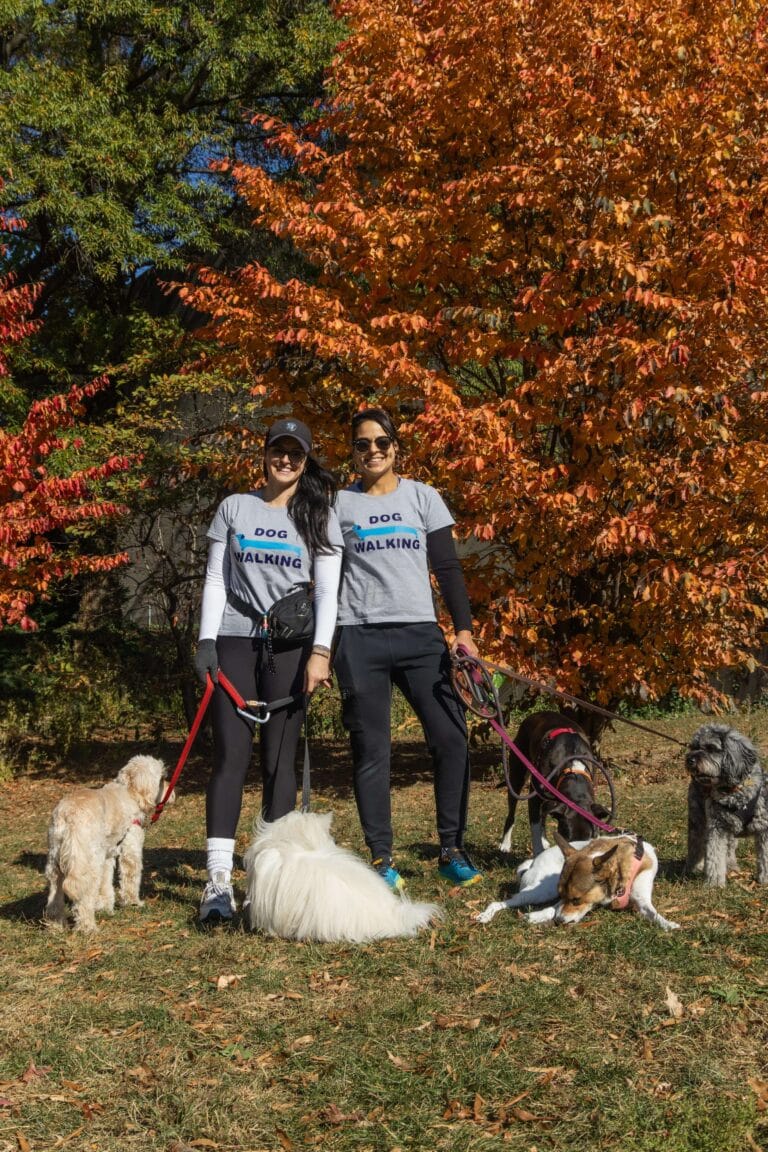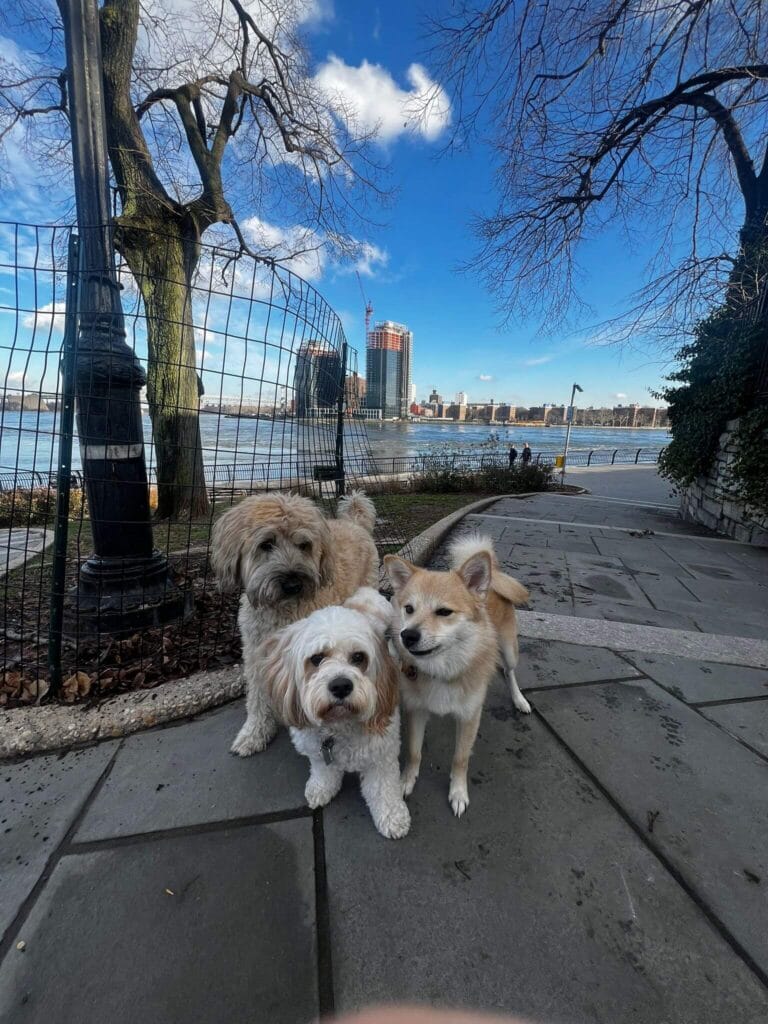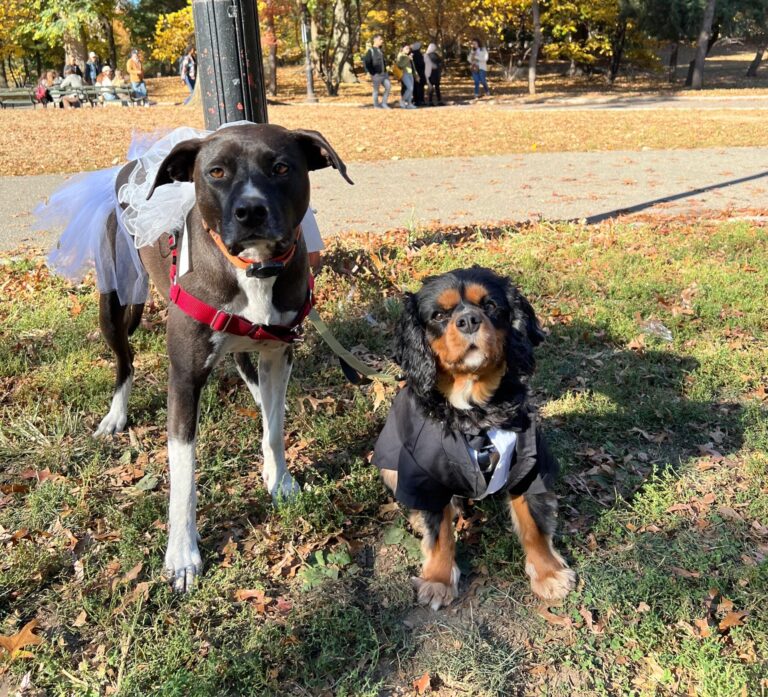Ever noticed how Manhattan dog owners seem to fall into two camps? The “quick pee break” sprinters and the “full Central Park expedition” marathoners. And you’re stuck in the middle, wondering if Fluffy is getting enough outside time in this concrete jungle.
Look, walking your dog in the city isn’t like suburban strolls. Manhattan’s unique challenges—crowded sidewalks, limited green space, and tiny apartments—completely change how often your dog should be walked.
By the end of this guide, you’ll have a crystal-clear walking schedule tailored to your Manhattan pup’s specific needs. No more guessing if those bathroom breaks are enough or if your dog walker is getting your money’s worth.
If you’re already relying on help, make sure you’re not settling. Our Comprehensive Guide to Choosing the Best Dog Walker in NYC shows you how to find someone who actually fits your dog’s needs and your city lifestyle.
But here’s what most Manhattan pet parents get wrong about walking frequency, and it’s costing their dogs more than just exercise…
Understanding Your Dog’s Walking Needs
Age-related exercise requirements
Dogs aren’t one-size-fits-all when it comes to walking needs, especially in a busy place like Manhattan.
Puppies (under 1 year) need shorter, more frequent walks – think 3-5 short outings daily. They’ve got energy bursting at the seams but don’t have the endurance for marathon sessions. The Humane Society offers great guidelines on puppy exercise and care
Adult dogs (1-7 years) typically need 2-3 good walks daily, totaling 1-2 hours. This is your sweet spot where they can handle longer adventures through Central Park or along the Hudson River Greenway.
Senior pups (7+ years) slow down just like we do. They usually need 2-3 shorter, gentler walks daily. That 6th-floor walkup might become challenging, so plan accordingly.
Breed-specific considerations for Manhattan dogs
Living in Manhattan means your Great Dane and your neighbor’s Chihuahua have wildly different needs.
High-energy breeds (Border Collies, Huskies, Jack Russells) need 3+ walks daily with serious exercise. Without proper outlets, they’ll redecorate your apartment with their teeth.
Medium-energy breeds (Beagles, Spaniels) do well with 2-3 daily walks.
Low-energy breeds (Bulldogs, Shih Tzus) might be perfectly happy with 1-2 shorter walks. They’re basically your perfect Netflix companions.
Remember that apartment size matters too. Dogs in smaller Manhattan spaces often need more outside time regardless of breed.
Health conditions that affect walking frequency
Your dog’s health significantly impacts their walking schedule.
Overweight dogs need more frequent, shorter walks to start, gradually building up stamina. The city’s endless stairs and hills can be tough on chubby pups.
Arthritic or older dogs might need shorter, gentler walks on flat surfaces – stick to well-paved areas rather than the rocky paths in Central Park.
Dogs with heart or respiratory issues need special attention in Manhattan’s summer heat and winter cold. Early morning or evening walks help avoid extreme temperatures — and knowing how to adapt your routine across seasons is essential, as we explain in our guide, Adapting Dog Walks for Manhattan’s Seasons: A Guide.
Brachycephalic breeds (Pugs, French Bulldogs) struggle in humidity and heat, so adjust walking times seasonally. They’re particularly vulnerable on those steamy August Manhattan sidewalks.
Recommended Walking Frequencies for Manhattan Dogs
Minimum daily requirements for urban dogs
Living in Manhattan with a dog isn’t like having a backyard in the suburbs. Your pup needs consistent outdoor time regardless of your busy schedule. For expert advice on urban pet care, the American Kennel Club provides excellent tips and resources.
Most dogs need at least 2-3 walks daily in the city. Small breaks won’t cut it – we’re talking actual walks where they can move and explore. Morning and evening walks are non-negotiable, with a midday break if you’re away more than 8 hours.
Even the tiniest apartment dwellers need 30-45 minutes of total walking time spread throughout the day. Your Yorkie might seem content lounging on the couch, but their physical and mental health depends on regular outdoor activity.
And walks aren’t just about bathroom breaks. They’re crucial for mental stimulation in the concrete jungle. To decide what kind of walk suits your dog best—whether a private stroll or a group outing—check out Private vs. Group Dog Walks: Which is Right for Your NYC Pup?. A dog who never leaves the apartment is like you being stuck in your bedroom all day – not exactly thrilling.
Optimal walking schedules by dog size
Your Chihuahua and your neighbor’s Great Dane have wildly different walking needs:
| Dog Size | Daily Walking Time | Frequency |
|---|---|---|
| Small (under 20 lbs) | 30-45 minutes | 2-3 walks |
| Medium (20-50 lbs) | 45-60 minutes | 3-4 walks |
| Large (50+ lbs) | 60-90+ minutes | 3-5 walks |
High-energy breeds like Border Collies or Aussies might need double these minimums regardless of size. Watch your dog – if they’re destroying furniture or bouncing off walls at 10 PM, they probably needed more exercise.
Manhattan dogs often need more frequent, shorter walks than suburban pups who get one long daily outing.
Adjusting frequency based on seasonal weather
Manhattan weather throws everything from scorching summers to freezing winters at your walking routine.
Summer demands early morning and evening walks when pavement isn’t hot enough to fry an egg. Test sidewalks with your hand – if it’s too hot for your palm, it’s too hot for paws. The American Veterinary Medical Association offers seasonal care tips for dogs.
Winter requires shorter but potentially more frequent outings. Some dogs need protective booties against salt and ice. Small or short-haired breeds might need a warm coat for anything below 40°F.
Spring and fall are your golden seasons – take advantage with longer, more enjoyable walks when the weather cooperates.
Rainy days? Sorry, but your dog still needs to go out. The right tools can make all the difference—our Essential Gear for Dog Walks in NYC: What to Pack covers the best rain gear, hydration tips, and safety accessories to keep walks stress-free no matter the weather.
Manhattan-Specific Walking Challenges
A. Navigating crowded sidewalks safely
Walking your dog in Manhattan is nothing like suburban strolling. Those packed sidewalks? They’re basically obstacle courses.
First off, keep your dog close. A 6-foot leash gives control without choking their freedom. When those tourist crowds form near Times Square or Fifth Avenue, switch to a shorter grip. For more detailed advice on navigating busy city streets safely with your dog, check out our guide on Staying Safe: Dog Walking Tips for Busy NYC Streets.
Your pup needs sidewalk manners too. Train them to walk on one consistent side (left or right of you) and to stop at intersections. This isn’t just good behavior—it’s survival.
Morning walks between 6-8am? Way easier than the lunch rush. Your dog will thank you.
Got a reactive dog? Try “block training” – teaching them to navigate one Manhattan block perfectly before adding more challenges. And always bring high-value treats to redirect attention when that hot dog cart appears.
B. Dealing with limited green space
Manhattan’s concrete jungle isn’t exactly a dog paradise. The average neighborhood park is about the size of a postage stamp compared to what suburbanites enjoy. For finding dog-friendly parks in NYC, NYC Parks website is the go-to resource.
Smart Manhattan dog parents:
- Map out small parks within walking distance from your apartment
- Learn which parks allow off-leash hours (usually before 9am and after 9pm)
- Explore Top Dog Walking Routes in Manhattan’s Upper East Side for hidden gems and scenic paths perfect for daily walks
- Join a membership dog run like the one at Madison Square Park
Central Park isn’t your only option! Check out Carl Schurz Park on the Upper East Side or the Hudson River Park pathway for longer walks with some actual grass.
C. Walking during peak vs. off-peak hours
Timing is everything in Manhattan dog walking.
Peak hours (7-9am, 5-7pm) mean:
- More sidewalk traffic
- Less personal space
- Higher anxiety for nervous dogs
- Longer waits at crosswalks
Early morning walks (5-7am) offer nearly empty sidewalks and parks. Your dog can actually sniff without being trampled! Late evening walks (after 8pm) give similar benefits with cooler summer temperatures.
Lunch hour walks? Absolute chaos in Midtown but surprisingly manageable in residential areas like the Upper West Side.
Rain is actually your friend. Most Manhattanites hide inside during drizzles, giving your pup much more sidewalk space. Just invest in good rain gear for both of you.
Professional Help for Busy Manhattan Dog Owners
When to consider dog walking services
Life in Manhattan moves at warp speed. Between your job, social commitments, and the general chaos of city living, your dog’s walk schedule can get squeezed—but keeping a routine is key to unlocking The Health Benefits of Regular Dog Walking in Manhattan NYC.
You should think about hiring a dog walker when:
- You’re regularly working 10+ hour days
- Your pup is home alone and getting destructive (goodbye, favorite shoes)
- You’re constantly rushing walks or skipping them entirely
- Your dog seems anxious, restless, or is gaining weight
- Bad weather keeps derailing your walking plans
- You’re traveling frequently for work
Manhattan dogs typically need 2-4 walks daily. If you’re consistently missing these, it’s time to call in backup. Considering a reliable Dog Walking Service in the Upper East Side can make all the difference for your dog’s routine and wellbeing.
Cost-benefit analysis of professional walkers
Manhattan dog walking isn’t cheap, but neither is replacing chewed furniture. Most services charge $20-30 for a 30-minute walk, with package deals available.
The real math:
- Your sanity: No more 11pm walks in February sleet
- Your dog’s health: Regular exercise prevents obesity and behavior problems
- Your schedule freedom: Late meeting? No problem
- Your apartment: Less accidents, less destruction
- Your social life: Happy hour without the guilt
Many Manhattan dog owners find that professional walking pays for itself through avoided vet bills and saved possessions alone.
Building a reliable walking schedule with help
The secret to happy Manhattan dogs? Consistency. Work with your walker to create a schedule that:
- Mimics your dog’s natural routine
- Includes at least one longer walk daily
- Accommodates your work schedule
- Has backup options for emergencies
Good walkers will send GPS tracking, photos, and detailed reports after each walk. Don’t be afraid to request specific routes or activities.
The best arrangements blend your own walks (evenings and weekends) with professional help during workdays. This gives your dog the perfect mix of family time and exercise.
A Manhattan Dog’s Walking Requirements
Every Manhattan dog deserves regular walks tailored to their unique needs. Small breeds may need 2-3 short walks daily, while larger, more energetic dogs require 3-4 longer outings to stay happy and healthy. Factor in your neighborhood’s specific challenges—crowded sidewalks, limited green spaces, and weather extremes—when planning your walking schedule.
Remember that consistent walking routines provide essential physical exercise, mental stimulation, and socialization opportunities for your urban companion. If your busy Manhattan lifestyle makes maintaining an ideal walking schedule difficult, consider professional dog walking services to ensure your furry friend receives the care they need. Your dog’s wellbeing is worth the investment, whether that means adjusting your schedule or bringing in professional help.
Ready to give your dog the best walks in Manhattan? Contact Andreia’s Dogs today and let our experienced team take care of your pet’s daily exercise with love and safety.
Frequently Asked Questions (FAQs)
Most small dogs benefit from 2-3 short walks daily, while larger or more energetic breeds usually need 3-4 longer walks to stay healthy and happy in the city environment.
Crowded sidewalks, limited access to green spaces, unpredictable weather, and busy street crossings are some common urban challenges dog owners face.
Use secure, comfortable walking equipment, keep your dog close, avoid peak pedestrian times if possible, and stay alert to distractions and hazards like bicycles and street traffic.
If your schedule is too tight to provide regular, adequate exercise or if your dog requires extra attention, a professional dog walker can help maintain your dog’s health and routine.
Extreme heat, cold, rain, and snow require adjustments like shorter walks, protective gear (like booties), and avoiding unsafe surfaces to protect your dog’s paws and wellbeing.

